Can you imagine learning to weave with alpaca wool and sharing a traditional lunch with a local family, that’s exactly what experiential tourism in Willoq offers—a unique experience in the Sacred Valley of the Incas (Cusco, Peru) that allows you to immerse yourself in the living culture of the Andean communities. Willoq is one of the last communities with direct Incan ancestry, where ancestral customs remain alive in every aspect of daily life. Participating in an experiential tour in Willoq means living alongside locals, learning about their ancient weaving techniques, and taking part in rituals such as offerings to the earth or preparing a pachamanca.
Here you’ll find all the information you need about experiential tourism in Willoq. The goal is to help you understand this authentic and responsible way of traveling, so you can fully enjoy your cultural immersion in the Quechua communities of Cusco’s Sacred Valley.
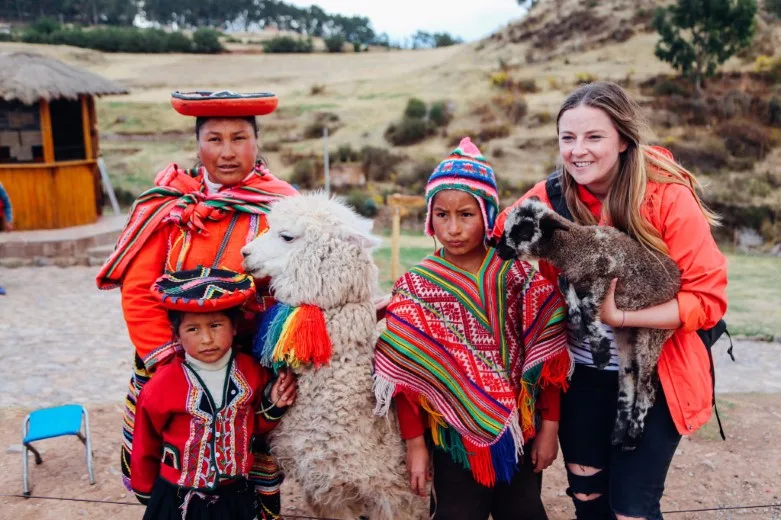
What is experiential tourism in Cusco?
Experiential (or community-based) tourism is a way of traveling in which the visitor immerses themselves in the daily life of local communities. It’s not just about sightseeing, but about living with host families and participating in their daily routines. In Cusco, especially in the Sacred Valley, several Andean communities have organized such experiences. Travelers help with agricultural tasks, learn to prepare traditional dishes, and visit local artisan workshops. In other words, in experiential tourism, you engage and collaborate instead of simply observing.
In practice, this means spending time with local families, listening to their stories, and learning their traditions. For example, you might plant potatoes using a chaquitaclla, cook a pachamanca underground, learn to spin wool using a spindle, or participate in an offering to the Pachamama. This approach enriches your trip on a deep level and supports sustainable tourism, since the economic benefits of the visit go directly to the host community, helping to preserve its cultural heritage.
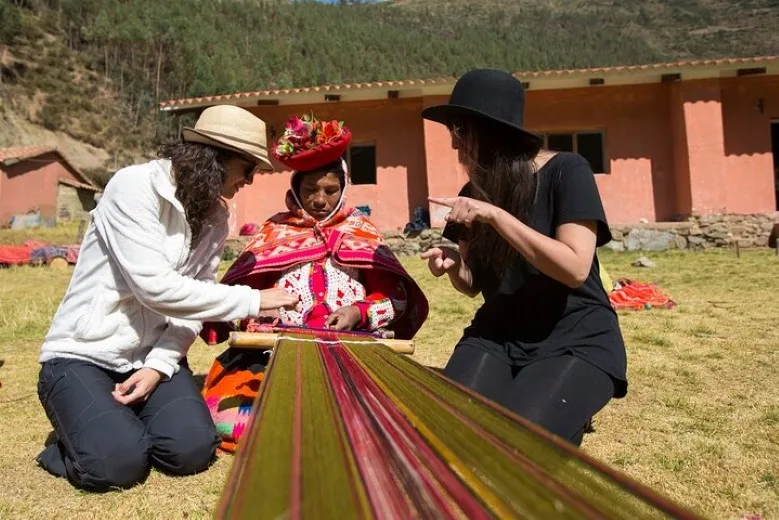
Advantages of Experiential Tourism in Willoq – Sacred Valley
- Authentic contact with Andean culture: Willoq is a village that preserves Incan traditions in its clothing, food, and rituals. When you engage in experiential tourism here, you learn ancient weaving techniques and witness the traditional dress of the community. This genuine immersion makes your trip more enriching and different from a conventional tour.
- Direct support to the local community: Your expenses directly benefit the families of Willoq. This provides income for health, education, and community projects, strengthening the local economy and preserving Andean culture.
- Personalized experience in small groups: Experiential tours usually involve few travelers, allowing for closer attention. You become part of the community—not just another number.
- Connection with nature: Willoq is surrounded by mountains, snowy peaks, and lagoons in the Sacred Valley. Visiting means disconnecting from city noise and breathing the fresh Andean air.
- Purposeful and sustainable travel: Experiential tourism in Willoq makes you feel part of the community and its environmental stewardship. It avoids mass tourism and promotes sustainable cultural practices.
- Personal fulfillment: Stepping out of your comfort zone creates emotional impact. Many travelers feel this kind of experience transforms their view of the world, helping them appreciate simplicity and solidarity.
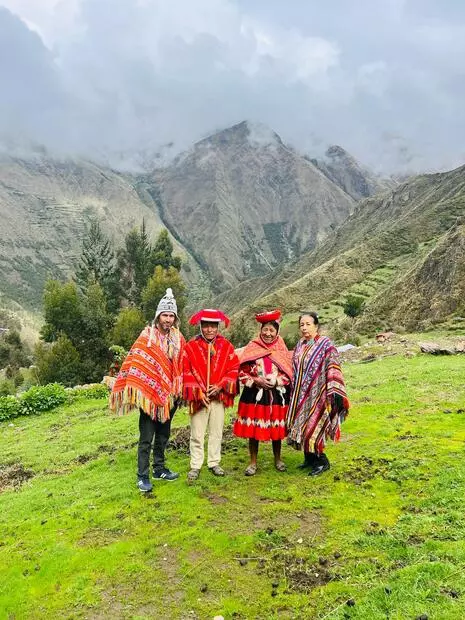
Activities You Can Do During Experiential Tourism in Willoq
In Willoq, you can participate in cultural and craft activities tailored to the village’s daily rhythm:
- Wool spinning and weaving: Learn from Andean women how to use a spindle and loom to create traditional ponchos and llicllas. You’ll dye alpaca fibers with natural pigments and weave your own piece.
- Natural dyeing workshop: See how colors are extracted using local flowers, leaves, and roots.
- Pachamanca preparation: Participate in traditional Andean cooking by burying hot stones and food in the earth. Then, enjoy a communal lunch with freshly made pachamanca.
- Huallata dance: Watch or participate in this typical community dance, accompanied by drums and flutes.
- Agricultural activities: Visit the local fields and help plant or harvest native potatoes.
- Pachamama offering: Take part in a ceremony to thank Mother Earth for her generosity.
- Village tour and light hiking: Walks with spectacular views of snow-capped peaks and Sacred Valley lagoons.
- Tasting local foods: Besides the pachamanca, sample dishes like quinoa soup and muña tea.
These activities guarantee a complete experiential journey, where you’ll work, cook, learn, and share with the community.
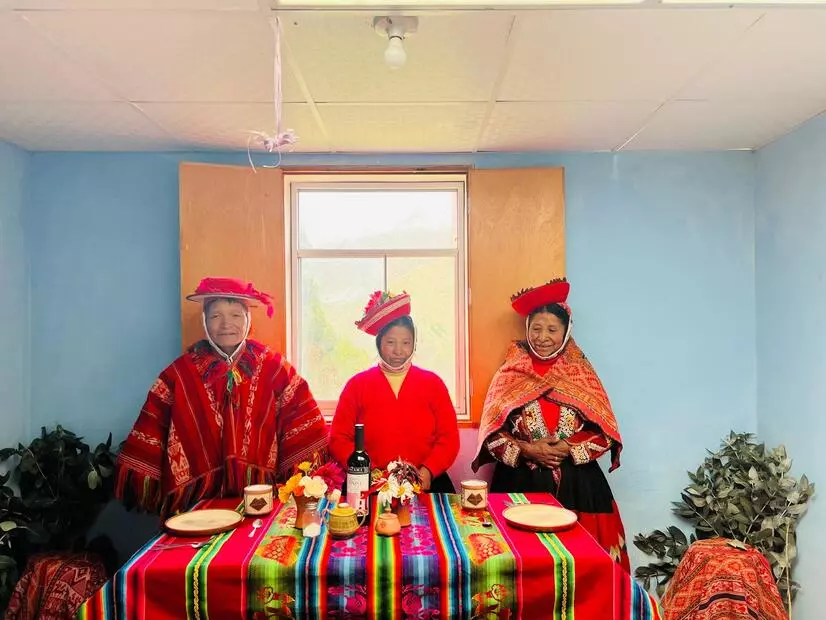
Best Time to Do Experiential Tourism in Cusco – Willoq
Cusco’s weather has two main seasons:
- Dry season (April–October): Clear skies and little rain. The ideal time for outdoor activities, hikes, and photography.
- Rainy season (November–March): Green landscapes and frequent afternoon rain. If you choose to travel during these months, bring waterproof clothing and proper footwear.
For overall comfort, it’s recommended to travel between April and October. However, all activities can still be done in the rainy season if you’re well prepared.
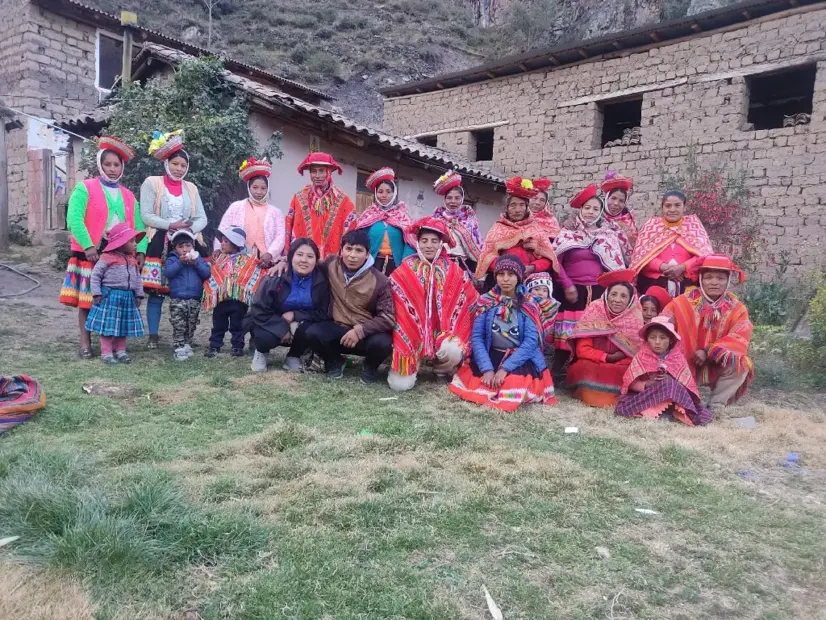
Experiential Tourism in Cusco vs. Conventional Tourism
Experiential tourism in Cusco is very different from traditional tourism:
- Interaction vs. observation: In conventional tourism, you observe. In experiential tourism, you actively participate in the life of the community.
- Flexible itinerary: Experiential tourism adapts to the community’s pace, allowing for more authentic experiences.
- Direct economic benefits: Your expenses go straight to host families, promoting fair and sustainable tourism.
- Positive cultural and environmental impact: Experiential tourism avoids overcrowding and strengthens local culture.
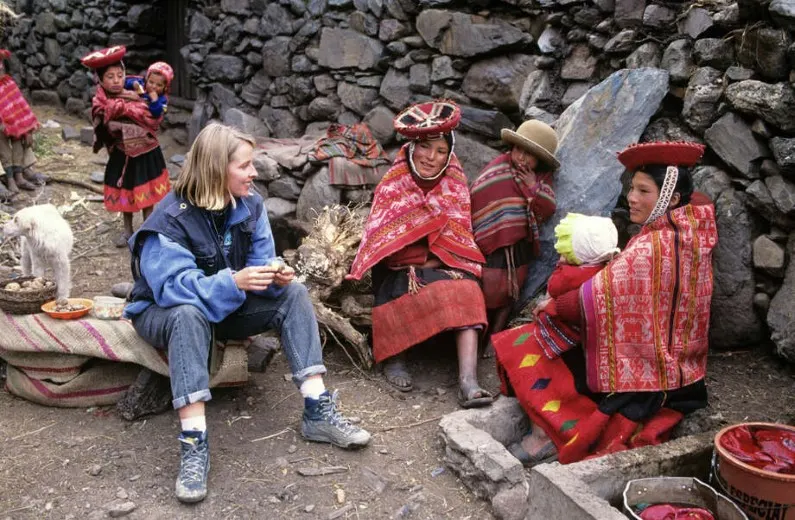
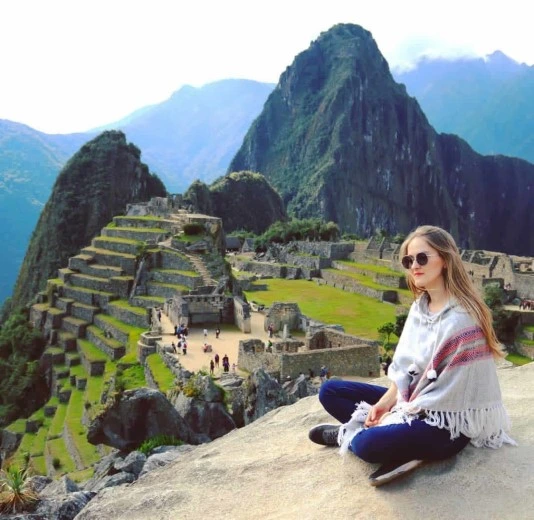
Practical Tips and Recommendations for Experiential Tourism in Willoq
- Be patient and open-minded. Communities live at a different pace. Enjoy the moment.
- Respect local customs. Ask before taking photos and follow your guide’s instructions.
- Acclimate to the altitude. Arrive in Cusco a few days early.
- Learn a few Quechua words. Greeting people in Quechua shows respect.
- Bring small, useful gifts. Simple tokens are appreciated.
- Buy local crafts. Support the community’s income.
- Stay hydrated and eat well before the activity.
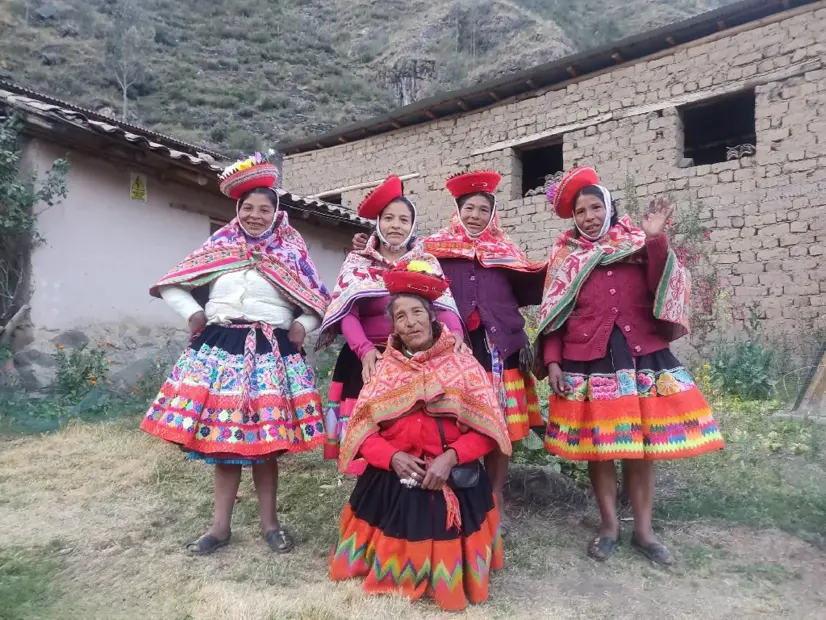
What to Bring for Experiential Tourism in Willoq
Essential items for your trip in Cusco:
- Comfortable and warm clothing: Layers, waterproof jacket, and poncho.
- Proper footwear: Hiking boots or durable shoes.
- Sun protection: Hat, sunscreen, and sunglasses.
- Camera: To capture every moment.
- Cash (in soles): There are no ATMs in Willoq.
- Water bottle and snacks.
- Personal items: Walking sticks, notebook, and small gifts.
- Positive and respectful attitude: Your best tool.
Frequently Asked Questions About Experiential Tourism in Willoq
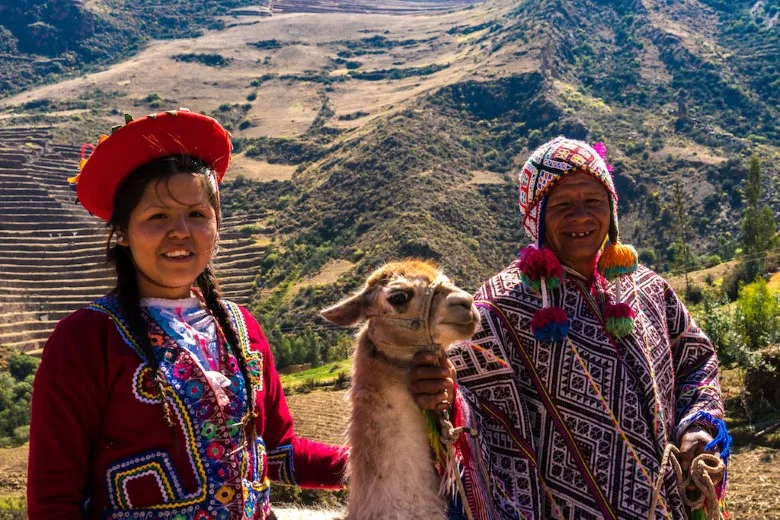
1. Where is the community of Willoq located and how do you get there?
Willoq is located in the district of Ollantaytambo, within the Sacred Valley of the Incas, in the Cusco region. To get there from Cusco, it takes about 2 hours by road, followed by a short stretch along a rural path. It is recommended to go with a guide or organized tour.
2. Do I need to speak Quechua to do experiential tourism in Cusco?
No, you don’t need to speak Quechua, as bilingual tour guides provide translation throughout the entire experience. However, learning a few basic Quechua words is highly appreciated by the community and enriches the cultural exchange with the local people.
3. How long does the experiential tour in Willoq last?
The tour usually lasts a full day, starting in the morning from Cusco and ending in the afternoon with the return trip. During the day, you will participate in agricultural, textile, and culinary activities, as well as share time with local families in an authentic and traditional setting.
4. Is it possible to stay overnight in Willoq during the tour?
Although most tours are one-day only, there are options to stay overnight in local family homes, as long as you book in advance. This experience allows for a deeper immersion into the customs, food, and daily life of the community.
5. Is Willoq a suitable place for children and older adults?
Yes, Willoq is a destination accessible to people of all ages. The activities are calm and do not require intense physical effort, but it’s advisable to acclimate beforehand in Cusco, especially due to the altitude. The experience is ideal for families and older adults.
6. What does the experiential tourism tour in Willoq include?
The tour typically includes round-trip transportation from Cusco, a bilingual guide, a typical Andean lunch, as well as materials for weaving, farming, or other cultural workshops. It also includes direct participation in traditional experiences that reflect the ancestral way of life.
7. What is the traditional clothing of the Willoq community like?
The people of Willoq wear very colorful traditional Andean clothing, featuring handmade garments made from alpaca or sheep wool, ponchos, skirts (polleras), and distinctive hats based on age or marital status. Each garment reflects cultural identity and the Andean worldview.
8. Is there internet access in Willoq?
No, there is no internet access in Willoq, which is ideal for a total disconnection from technology and to truly connect with nature, local culture, and the community experience. It is advisable to inform your contacts in advance if you’ll be offline.
9. Do I need to book the experiential tourism in Willoq in advance?
Yes, it is recommended to book in advance, especially during high season or holidays, as spots tend to be limited. To ensure an organized and authentic experience, it’s best to book with a specialized agency such as Travel Peru Agency.

Experiential tourism in Willoq allows you to live with Quechua communities, learn traditional techniques such as weaving, and participate in rituals like pachamanca or offerings to the earth. Located in the Sacred Valley of the Incas, this authentic and sustainable experience connects travelers with the living Andean culture in a privileged natural setting. If you’re looking for an authentic and purposeful journey, this is the best way to discover the deep and real Peru. Contact us and book your experiential tour in Cusco.